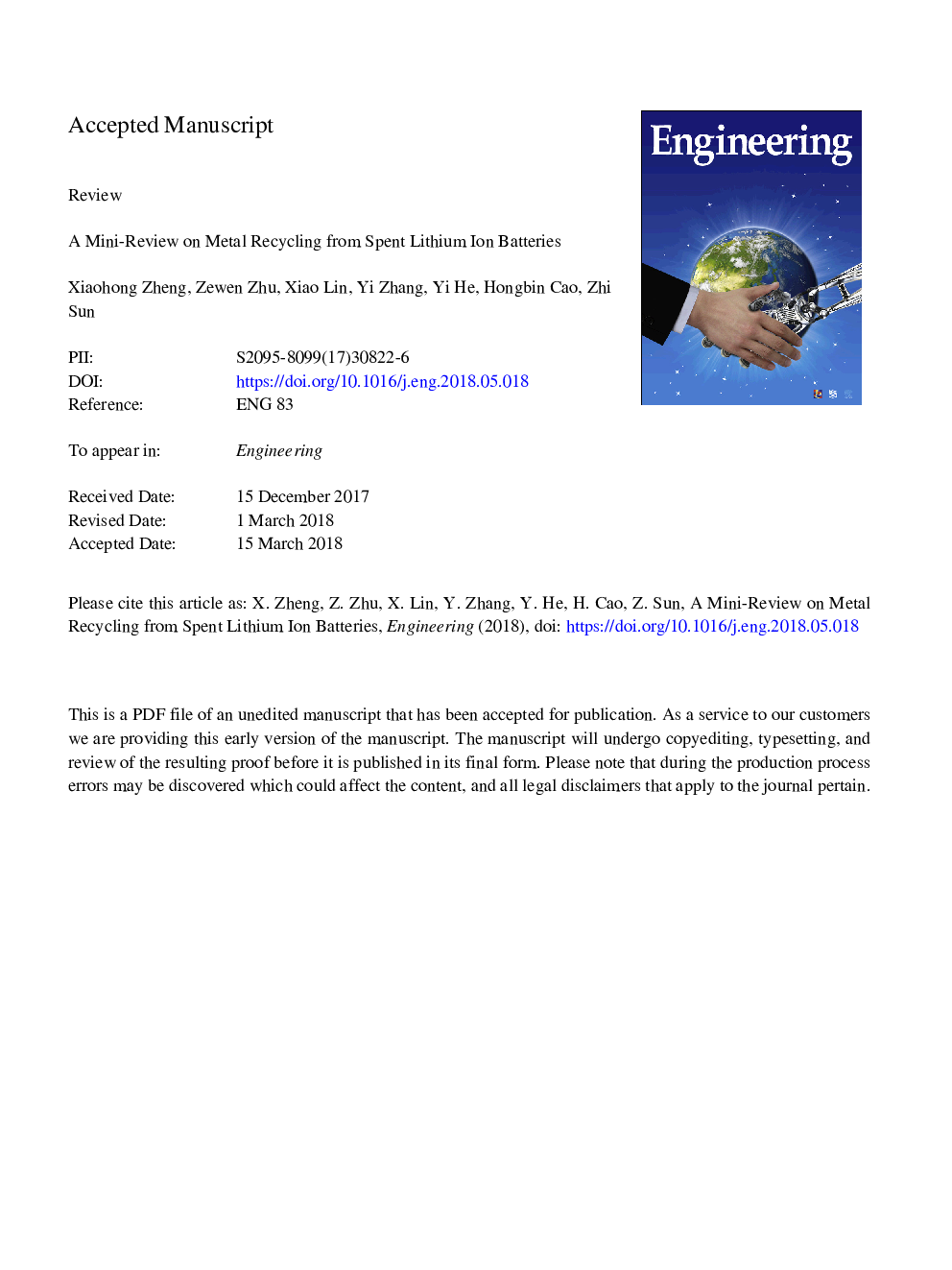| Article ID | Journal | Published Year | Pages | File Type |
|---|---|---|---|---|
| 6893282 | Engineering | 2018 | 20 Pages |
Abstract
The rapid growth of lithium ion batteries (LIBs) for portable electronic devices and electric vehicles has resulted in an increased number of spent LIBs. Spent LIBs contain not only dangerous heavy metals but also toxic chemicals that pose a serious threat to ecosystems and human health. Therefore, a great deal of attention has been paid to the development of an efficient process to recycle spent LIBs for both economic aspects and environmental protection. In this paper, we review the state-of-the-art processes for metal recycling from spent LIBs, introduce the structure of a LIB, and summarize all available technologies that are used in different recovery processes. It is notable that metal extraction and pretreatment play important roles in the whole recovery process, based on one or more of the principles of pyrometallurgy, hydrometallurgy, biometallurgy, and so forth. By further comparing different recycling methods, existing challenges are identified and suggestions for improving the recycling effectiveness can be proposed.
Related Topics
Physical Sciences and Engineering
Computer Science
Computer Science (General)
Authors
Xiaohong Zheng, Zewen Zhu, Xiao Lin, Yi Zhang, Yi He, Hongbin Cao, Zhi Sun,
